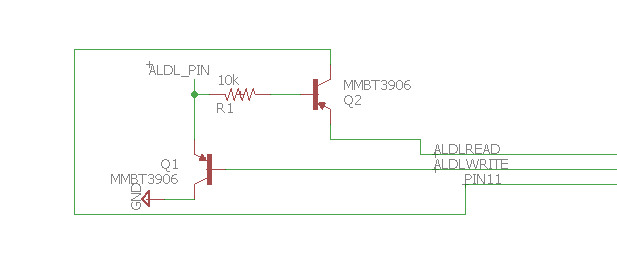Since it looks like I will be getting involved in getting the J1850 VPW support going I am curious if there would be any interest in ALDL support? This would be GM’s pre 1996 ODBI protocol. Since it will run off a standard TTL -> USB adapter at roughly 8192 baud with the RX/TX lines combined I have to believe it could be done with the M2.
I have seen mention that ALDL runs at 7 volts but apparently 5 volts is close enough if people are using TTL -> USB adapters.
To make work with the M2 I could use 1 pin as I/O or use combo of 2 pins with one being in and the other being out. The main issue I see with this is the difference in voltage. if the M2 triggering voltage for the input is 4 volts or more I could likely just use a diode to protect the ALDL from the 12 volt outputs of the M2 and use a resistor to drop the M2’s 12 volts to the desired voltage of the ALDL.
But again, not worth doing if there is no desire for it. Not sure how far back GM’s used the ALDL protocol but I know my '94 has it and as late as the Pontiac GTO used it to communicate within the vehicle and possibly others newer. And then again if a $10 interface already works with it does it make sense to add to the M2. I can see value in it since it could be included in the new Lawicel V2 protocol and be used with common utilities. Not to mention would require minimal additional hardware to make work assuming the M2 can trigger a digital input on 4 volts or higher.
And since some vehicles with J1850 or possibly even canbus still contain ALDL data buses it could make things easier if all is included in same device.


